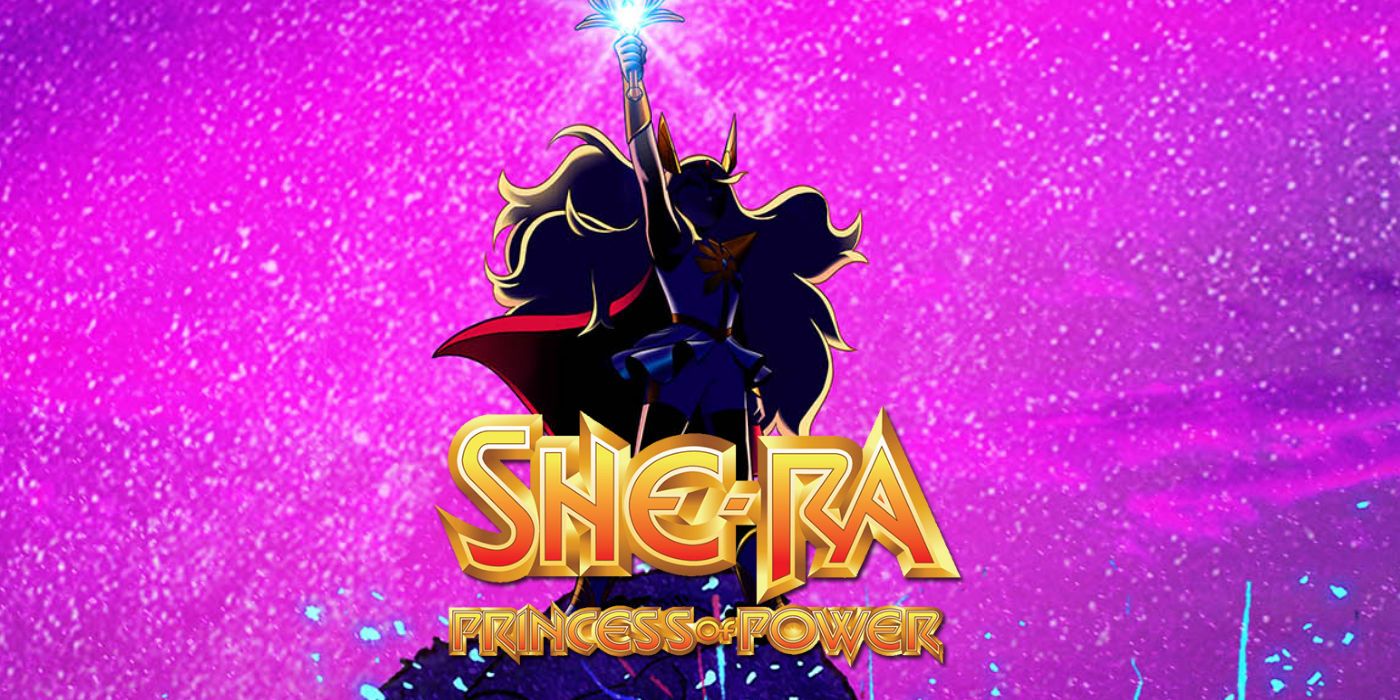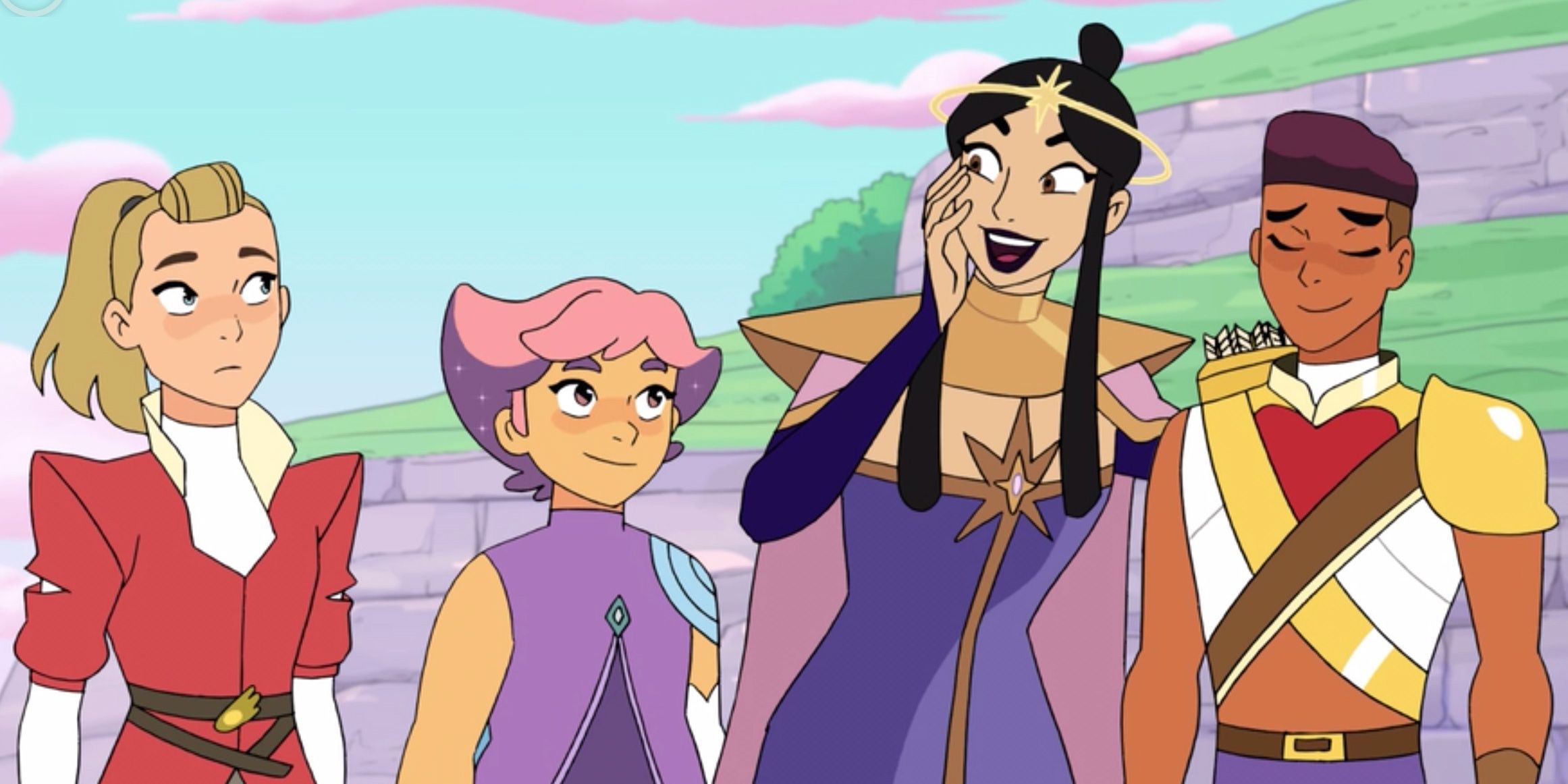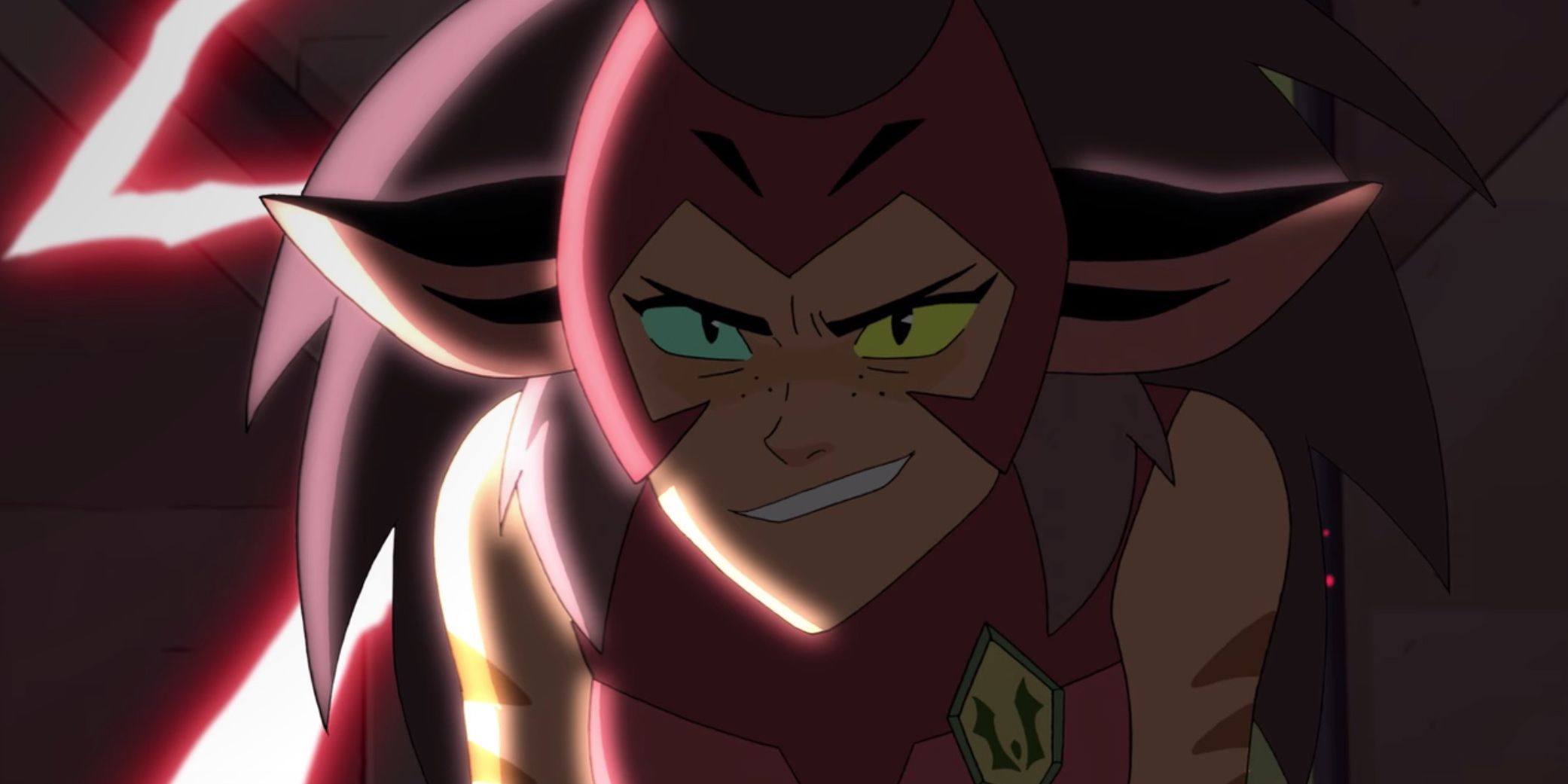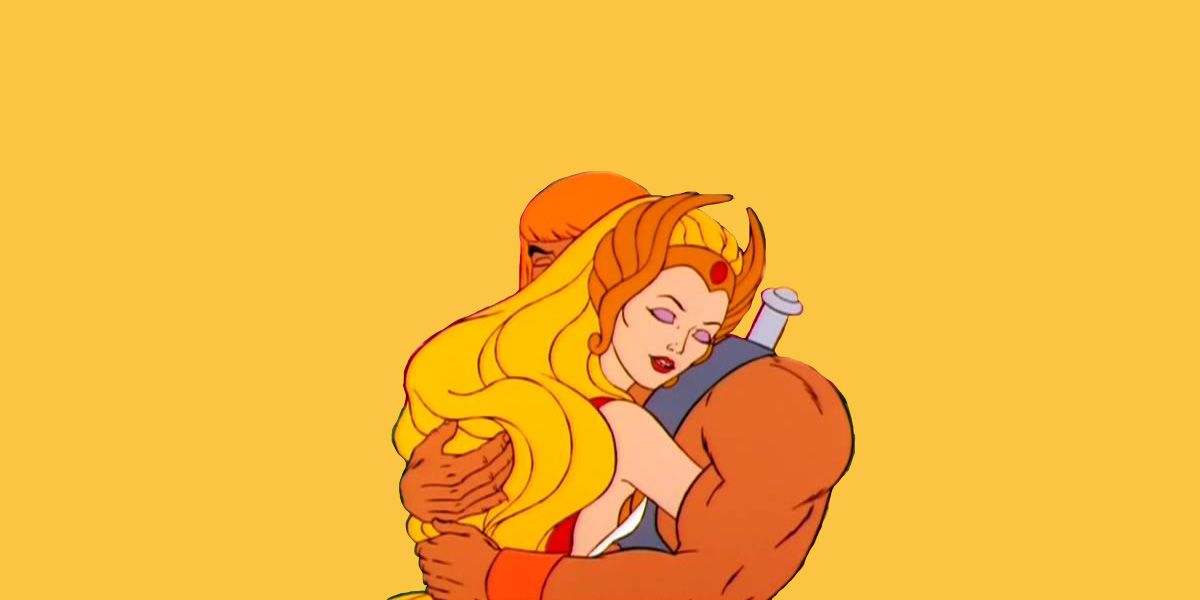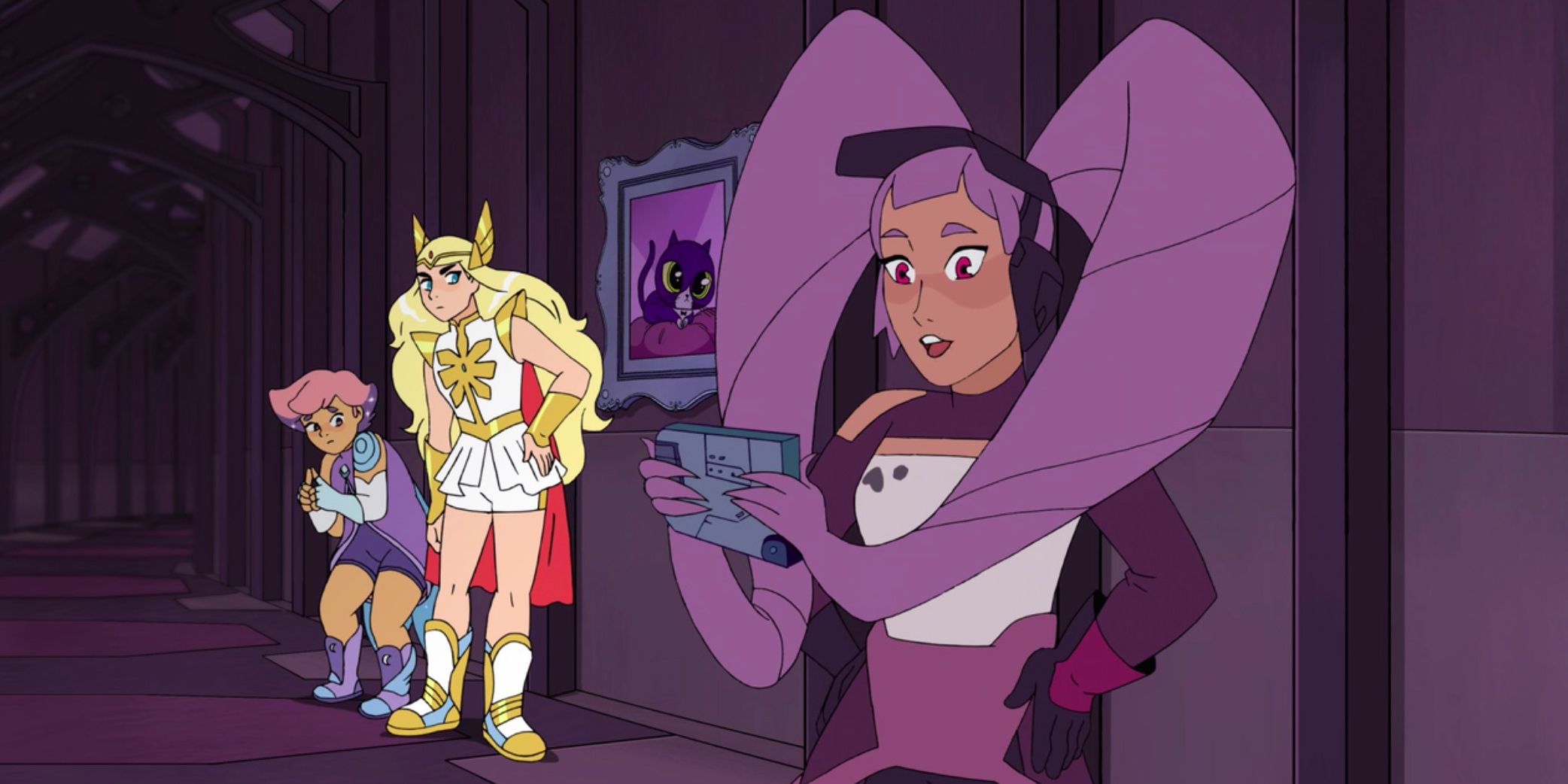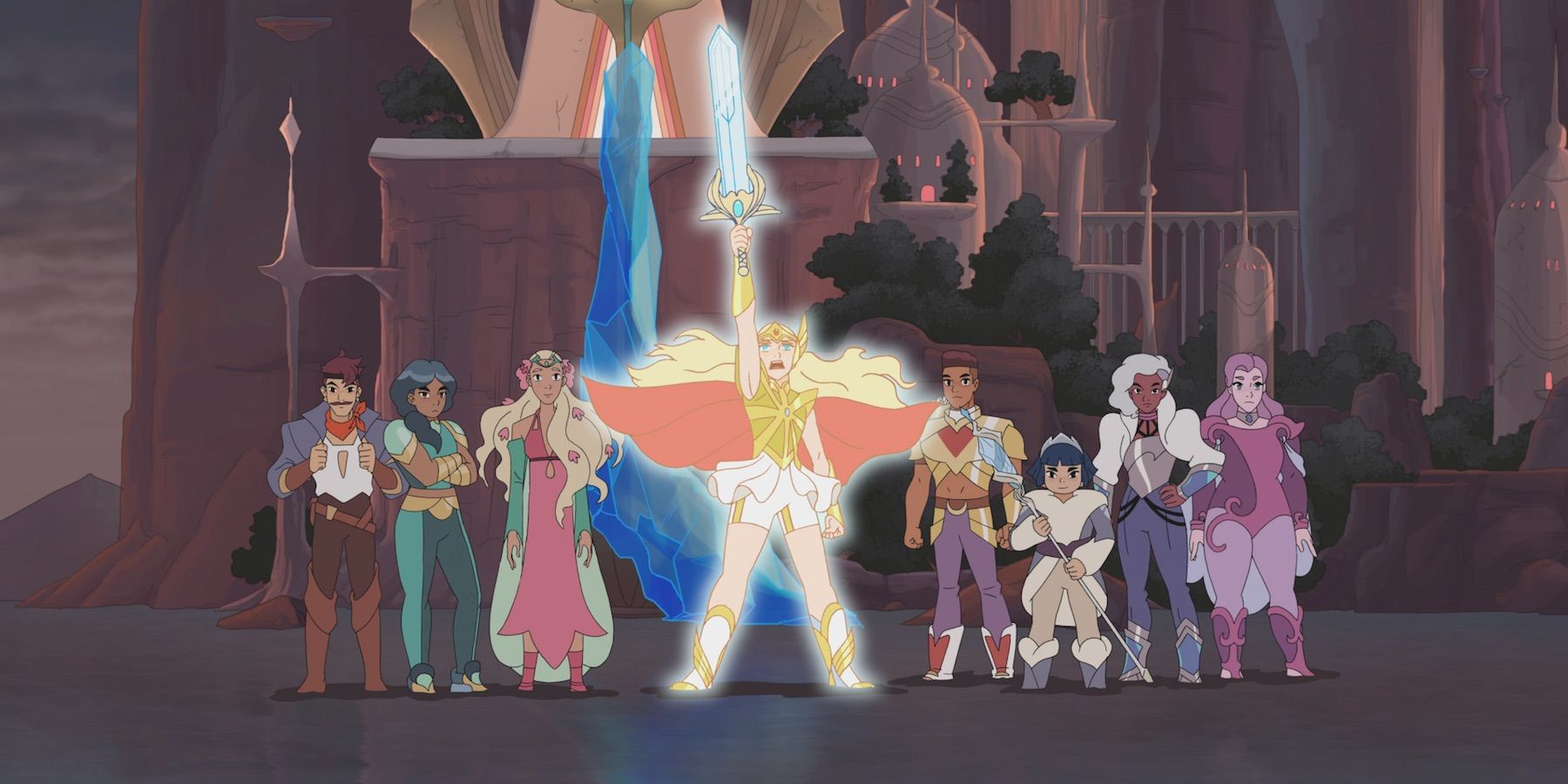Noelle Stevenson’s She-Ra reboot She-Ra and the Princesses of Power relaunched the character on television, and there’s already a lot to unpack with its ending. While the series paid homage to the original Masters of the Universe cartoon by using the bones of the first She-Ra TV series, it also expertly created something new by changing up some key elements.
The characters and their affiliations are roughly the same, as are certain aspects of Adora’s She-Ra origin story. She still starts off a Horde soldier whose been raised by the evil army since she was an infant. Her primary foe is still Catra, who remains loyal to the Horde after Adora defects to the Rebellion. But Stevenson grounded their relationship far more in She-Ra and the Princesses of Power. Going off the logic that the women would’ve been raised together since childhood, she creates a backstory for their enmity that’s rooted in the fact that they used to be very close. It’s a clever and moving way to update the story without abandoning one of the original series’ iconic rivalries.
Related: She-Ra and the Princesses of Power: Voice Cast & Character Guide
Aside from more complex relationships, there are also countless examples of the Princesses of Power’s successful attempts to update the She-Ra franchise to include more diverse characters when it comes to ethnicity, body type, and sexual orientation. The princesses come in all shapes, sizes, colors, and backgrounds, as opposed to the lithe characters that populated the '80s series, and there are several winning nods to gender fluidity that feel organic and genuine within the mythology. Finally, the balance Stevenson strikes between old and new is also manifested in the season 1 finale as she pays homage to several threads from the original She-Ra series, as well as shifting the focus from She-Ra's heroism to the idea of victory through collaboration.
- This Page: She-Ra's Ending, Catra's Plan, & Adora's Origin Explained
- Page 2: Entrapta's Rebellion Future & The Princesses Uniting
What Happened At The End Of She-Ra Season 1
In episode 12, "Light Hope," Adora enters the Crystal Palace and gets her first big download from her e-mentor; she learns a good deal about the history of the First Ones and the She-Ra legacy. In a pretty big deviation from the source material, Adora is just latest in a long line of women chosen to wear the She-Ra mantle, not unlike the Slayer construct in Buffy the Vampire Slayer. The warrior goddess had been an institution among the First Ones until a millennia before when the last She-Ra lost her mind and got the First Ones exiled to Despondos.
Adora, at first, seems to take Light Hope’s warning that she’ll need to shed external attachment seriously because she doesn’t want anything else bad to happen to Glimmer, Bow, or anyone else for that matter because of her. But eventually she discovers that, by abandoning her friends, she’s actually ensuring their deaths because she can’t stop the Horde alone. Instead of embracing her lone, warrior directive, she throws off Light Hope’s influence the same way she threw off Shadow Weaver’s and forges her own path. This eventually leads to her acceptance of the Princesses' help and the reformation of the Princess Alliance.
Catra’s Plan Explained
While Catra was personally devastated that Adora could leave her behind, Adora ceases to be her main motivation. During episode 11, "Promise," she reveals that once the pain of Adora’s abandonment wore off, Catra realized that, with her friend and rival out of the way, barely anything was standing between her and the Horde validation she sought so desperately.
Related: Netflix's She-Ra Cast Confirms LGBTQ Characters in Reboot
If Adora’s arc this season was learning how to be part of a team, Catra’s arc was learning how to be an army of one. She finds her way to total narcissism by the end of the first season, and it’s not that hard to understand why. Two incredibly important people in her life basically called her worthless by either abandoning her or just continuing a toxic pattern of emotional abuse (Shadow Weaver). That makes Catra’s plan to burn everything down and dance on the ashes understandable.
Not only does she want to end the Rebellion and finally best She-Ra for all the Horde to see, but she wants to eliminate anyone in her path to power as well. That’s why she uses Entrapta’s plan to harness the energy of the Black Garnet to disrupt the power of the rune stones on Etheria and weaken their defenses. Not only will she deal a crushing blow to the Rebellion in doing so, but she’ll also eliminate her biggest rival left in the Horde, Shadow Weaver. And, to her credit, despite her ultimate defeat, she performs well-enough that Hordak makes her his second-in-command after removing Shadow Weaver from power. Catra’s not friendly, but she’s effective.
She-Ra's Origin Isn't Fully Explained
The original She-Ra was a spinoff of He-Man Masters of the Universe, and, as such, Adora was introduced as He-Man’s/Prince Adam’s twin sister. She’d been spirited away as an infant by the Horde and grew up knowing nothing of her real family or her destiny as her brother's super-powerful warrior counterpart, She-Ra. The beginning of the cartoon series sees Prince Adam traveling to Etheria from Eternia and letting her know what’s up. Stevenson eliminated this portion of Adora’s backstory for the reboot, explaining she didn't want to set up Adora to have to "outshine or live up to the reputation of He-Man." So, Adora discovers her destiny and the Horde’s true (evil) nature, for the most part, on her own. Bow and Glimmer help, of course, but nowhere near to level that He-Man guided his poor, brainwashed twin sister in the '80s show.
That said, the fact that He-Man and Eternia play no part in She-Ra and the Princesses of Power’s first season doesn’t mean they won’t show up at some point. At several points throughout the series Adora experiences flashbacks going back to her birth, most of which take place while she’s attempting to communicate with the enigmatic Light Hope and the First Ones technology that seems to hold the key to her power. They’re usually comprised of a baby crying intercut with space travel scenes and, notably, a shooting star.
Related: She-Ra Co-Creator Strikes Back at Critics of New Character Design
It’s also important to note that, despite making mention of the fact that she doesn’t know where she came from and the fact that the Horde gave her a home, She-Ra and the Princesses of Power season 1 leaves that mystery largely unaddressed. Also unaddressed, Shadow Weaver’s particular favoritism of Adora. It’s possible during her time in Mystacor she became aware of Adora’s destiny and specifically brought her to the Horde to prevent She-Ra from ever coming into being. Even if that wasn’t the reason, it’s not like Shadow Weaver just liked Adora for Adora’s sake – she was clearly grooming her for command, and it doesn't feel like that was just because Adora was talented. So no, audiences don’t learn Adora’s origin story in total during season 1, but there are still many, many questions left pointedly unanswered.
Page 2 of 2: Entrapta's Rebellion Future & The Princesses Uniting
Will Entrapta Ever Return to the Rebellion?
Entrapta seems too charming to stay in the Horde forever. She’s distracted by anything technological and doesn’t seem to bear anyone any real ill-will so long as she gets to tinker around with First Ones technology. She doesn’t hate the Horde or the Princesses, really. That attitude in and of itself is dangerous considering that it makes her vulnerable to Catra’s manipulations, which eventually results in her changing sides. And she certainly seems emotionally fulfilled (if a little batty) doing her job increasing the deadly power of the Horde. But considering she seems to have more of a soul than Hordak and Shadow Weaver and joined the Horde under false pretenses, is there a chance she could be turned back?
Probably not any time soon, unfortunately. Entrapta was a villain in the original She-Ra series, and given how well she rounds out Team Horde with Scorpia’s oddly sunny disposition and Catra’s deadly determination, there’s no real reason to change that. She might get a redemption arc at some point down the road (especially given how genuinely upset her friends were at the thought of her death), but, for now, she's happy where she is. Plus, her dynamic with the rest of the Horde provides welcome levity.
The Princesses Finally Unite
One of She-Ra and the Princesses of Power’s deviations from the source material was the choice to reimagine the idea of a “princess.” Instead of a Adora being the only Princess among a team of powered individuals, she's one among many, if variable, powered individuals. Each kingdom on Etheria is ruled by a Princess who in possession of a rune stone that gives her elemental powers. While She-Ra appears to have more power than each of them individually, the series makes sure to communicate that it will takes more than one person to beat back the Evil Horde once and for all.
Glimmer, Bow, and Adora spend much of She-Ra and the Princesses of Power season 1 attempting to reinstate the Princess Alliance that fell apart years earlier. After Queen Angela and King Micah united the planet, the Rebellion suffered catastrophic losses that broke apart the alliance shortly after it had begun. Most of the princesses are old enough to be nervous about taking on the Evil Horde that directly, but eventually, in “The Battle for Bright Moon,” they’re convinced of their own abilities and join together to help She-Ra, Bow, and Glimmer defend Bright Moon and its runestone against Catra, Scorpia, and Entrapta. Frosta even breaks her neutrality to join the fight against the Horde, so no more Princess Proms where everyone’s invited anytime soon.
Mermista, Netossa, Spinerella, Perfuma, Frosta, Glimmer, Seahawk, and Bow all join forces during the climax of the episode and coordinate a spectacular defeat of Catra and her forces. They also discover that working together with She-Ra allows them to take advantage of her power even though their rune stones had been weakened by Entrapta’s hacking of the Black Garnet. According to Light Hope, everything on Etheria is interconnected, so it's only through the unity of the Princesses who control the elements will balance be restored (and presumably the planet will function like the well-oiled machine it apparently is).
All those elements make a blunt statement about the necessity of cooperation for mutual survival, which is one of the show's major themes. Despite the fact the She-Ra managed to bring everyone together, she's not necessarily the de facto leader. All the princesses must work in concert and balance to maintain Etheria's relatively utopian features. It's no coincidence that She-Ra and the Princesses of Power would debut amidst today's socio-political climate. Its dual messages of collaboration and self-actualization represent the progressive mindset of the creators behind it.

